The official Fuji X-Pro 2 camera body has been announced and there are a few pre-production bodies out in the wild among Fuji X shooters, but the official release version of the camera is yet to be seen. The camera is set to be shipped on February 28, 2016. I haven't yet laid hands on the camera, but I've put a few hours into finding every little thing available so far from those who have.
If you're one of the more than 1 million regular readers of Improve Photography, you already know that I ditched Nikon and switched to Fuji last year. Since then, dozens or hundreds of Improve Photography readers have also made the switch, partially because I'm always gushing about my Fuji gear. So sorry if I sound like a fanboy in this post. Maybe it's because I am.
But for the record, I also own a Canon and Nikon camera body that I use for testing new lenses. So I'm not THAT impartial 🙂
This article is being updated on an almost daily basis as new information becomes available. I'll also be putting together a series of Youtube videos as soon as the camera is out. Subscribe to my Youtube channel so you don't miss them.
Overview
The Fuji X Pro 2 is a gorgeous-looking retro-style camera that puts almost all of its attention to still photographers who want the control, and ease of shooting that the body provides.
The body includes all the high-end features you'd expect on a flagship camera: wi-fi, 1/8000 shutter speed, 1/250 sync speed, excellent low light specs, weather sealing, and a solid magnesium-alloy body.
When it comes right down to it, there are only two significant drawbacks to the camera from what I can see: (1) No tilting LCD screen, and (2) a relatively short battery life that will require the photographer to carry multiple batteries.
This is one of the first mirrorless cameras that can replace a DSLR for 99% of photographers. It still isn't the right camera for photographers who shoot pro sports (there's no 400mm f/4 on the Fuji system), but other than that, it's tough to think of a photography situation where the X Pro 2 would be a bad choice.
Specs
- 24.3 megapixel sensor
- Hybrid rangefinder and EVF viewfinder
- 273 autofocus points, with 77 cross type AF points
- Dual SD card slots
- Built in Wi-fi
- Tremendous controls on the camera: Joystick for AF, separate dials for ISO aperture and shutter, 6 customizable function buttons, etc.
- Weather sealed
- Max shutter speed 1/8000 physical or 1/32000 electronic shutter. 1/25o flash sync speed.
- 1080p/60 video
- 8fps with a huge buffer
- ISO 100 to 51,200
The Viewfinder: Including the big myth
The Fuji X Pro 2's most unique feature is that it has a rangefinder-style viewfinder. Rather, I should more correctly say that the Fuji X Pro 2 CAN HAVE a rangefinder style viewfinder. This is something that I didn't explain well when I discussed it on the most recent episode of the podcast and I got some people confused.
For those of you who didn't shoot a rangefinder film camera, a rangefinder viewfinder basically means that you see out through the camera body through a little window and NOT through the lens. The viewfinder shows lines in the window showing where the edges of the frame are as you zoom in and out, but you can see wider than what the lens is seeing.
This works quite well when shooting landscapes or street photography where you want to see what's in the frame and what's slightly out of it so you can decide if you want to include it. However, it's a disaster for sports and wildlife photographers, who use long lenses. You'd see a very wide image through the viewfinder, and then a tiny little box in the middle of the frame showing where the frame of the picture is through the lens.
Here's where the myth comes in! I'm sure this scares off a lot of photographers. It did to me as well until I understood it better. This is not a traditional rangefinder camera. Yes, this view is available, and I actually expect it to be quite handy when shooting wide, but it ALSO has a normal EVF (Electronic viewfinder) for shooting just like you'd see if you were to shoot with an XT1. There's a little lever on the front of the camera to the left of the viewfinder window that allows you to switch between normal EVF mode and this rangefinder mode. So you CAN use the X Pro 2 with a normal viewfinder in addition to the rangefinder mode if you choose to use it.
But there's one other mode available for the viewfinder–hybrid mode. The hybrid mode is pretty unique. It shows a traditional rangefinder view, but also a little popout at the bottom right of the screen showing a tiny image preview.
The refresh rate on the Fuji viewfinders that I've tested are the best in the market. There is almost no perceptible lag, and word on the street is that the lag will be reduced even more on the new Fuji X Pro 2.
The EVF is actually slightly smaller than the one on the XT1, but it has a higher resolution to show greater detail.
Bert Stephani pointed out on Youtube that he likes the viewfinder placement on the X Pro 2. Because it is way off in the corner of the camera, your face doesn't contact the LCD screen as much and most of your face is not covered by the camera so you can more easily communicate with your portrait subjects without hiding behind the camera. Another benefit to the viewfinder placement is that you're less likely to bump the eye detection sensor accidentally, which switches the view from LCD to viewfinder.
UPDATE on January 29, 2016: It was first rumored that the X Pro 2 would not adapt the optical viewfinder to adjust to new lenses (being more zoomed in when using a long lens). This is not true. The feature IS in the X Pro 2, so using long lenses won't be so ridiculous 🙂 Thanks to the commenter below that pointed it out to me.
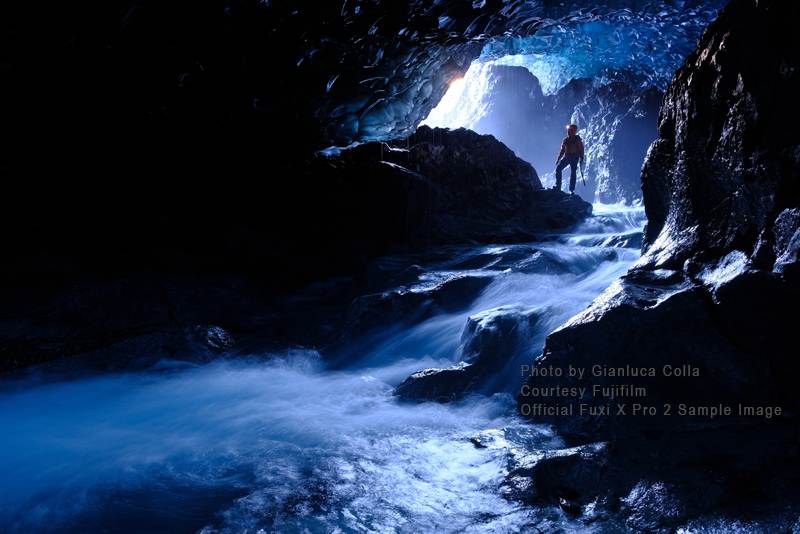
Shutter Speed (And that interesting shutter dial)
The max physical shutter speed of the X Pro 2 is 1/8000. That's actually quite nice to have. When I'm shooting on a bright day but want to achieve a shallow depth of field with an f/2.8 lens, I need the 1/8000 shutter speed to cut out more light.
One of the biggest improvements to this body is that the flash sync speed is now 1/250. This is a very welcome change for flash photographers like myself who need to cut out more light so a faster aperture can be used, or to freeze motion in brightly lit areas. The sync speed of the previous model was an annoying 1/180. On the shutter speed dial, the max flash sync speed is marked with an x after the number.
Within the shutter speed dial is the subset ISO dial. By lifting up the edges of the shutter speed dial and twisting, you can see the ISO change. There is a little plastic window on the shutter dial that shows the ISO. I'm not convinced that this is better than the separate ISO dial on the XT1, but I'm at least glad to see that there are separate dials for shutter, aperture (on the lens), and ISO. I would have freaked out if Fuji had removed the ISO dial entirely.
Speed
Fuji really went crazy with the processor in this camera, which should hopefully improve the responsiveness and snappiness of what I would already consider to be a good menu system on the Fuji cameras. The new processor is quad core.
The camera is capable of shooting a respectable 8 frames per second, which makes this camera appropriate for even casual sports and wildlife shooters like myself.
The buffer on the X Pro 2 is really huge. I've searched around and can't confirm a specific number of raw files that it can do, but I heard a loooooooong burst on some of the pre-production models from other photographers.
Image Quality and Low Light Performance
The X Pro 2 does not utilize a low pass filter which will, in theory, produce sharper photos. I heard several comments from official Fuji X shooters who got a pre-production version of the camera that the Jpeg images were surprisingly sharp, but that really doesn't mean much. A sharp JPEG could just mean that the camera applied more post-shot sharpening to the file.
The minimum ISO is 100, which is a welcomed change from the XT1's minimum shutter speed of ISO 200, which was disappointing for landscape photographers who often need to cut out more light to get a longer shutter speed without using filters.
On the high end of the ISO specs, I've always respected that Fuji advertises much more reasonable high ISO capabilities of its cameras than the other manufacturers. Canon is the worst about this. They'll advertise a max native ISO that is sometimes 3 full stops above what would ever be considered usable. With the Fuji system, you still wouldn't want to shoot at the max ISO, but it's usually a lot closer to reality. So don't take the max ISO number of a Fuji camera and use it to determine how well it will do in low light. The only way to know is to test it for yourself.
I was really nervous about the low light performance of the Fuji line of cameras when I considered switching over from my Nikon D810 full frame camera. I'd always heard that mirrorless cameras don't do well in low light, and when I tested the micro 4/3 offerings from Panasonic and Olympus, I wasn't pleased. But I was AMAZED at how well my Fuji XT1 did with low light. I regularly shoot night photography with my Fuji XT1 and it holds its own against my full frame cameras. It's not AS good, but it's close.
The other thing to realize about the X Pro 2 and all of the other Fuji cameras that I've tested is that they are completely ISO invariant. Click that link to read my article explaining clearly what ISO invariance is. It's really quite interesting. But basically it means that it doesn't matter if you set the camera to 1600 to properly expose in camera, or if you shoot at ISO 100 (producing a very dark picture) and then bring up the exposure later. You'll get the same result. It's actually a very useful technology that you DON'T find in most of the Canon and Nikon bodies.
Build Quality & Body Features
Weather sealing is an excellent feature to see added to this camera body. I'll be interested to do a tear down or wait until someone else tears down this camera to see how well the weather sealing is done, though. Not all weather sealing is the same. Sometimes it's just a glorified term for putting in a few 2 cent rubber gaskets, and sometimes it means the camera has been designed from the ground up to make it tough and weather proof.
The buttons on the camera are much higher quality. Many of the previous Fuji cameras have very plasticy, clicky buttons. Fuji has made the buttons softer to the touch and added a little travel to the buttons. The spinning dials on the camera are made out of cross-hatched metal, which looks really cool.
One major disappointment on the Fuji X Pro 2 is that the LCD is not articulating or even tiltable. Why in the WORLD are camera manufacturers continually releasing cameras with fixed LCD screens? It's incredibly useful to have a tiltable LCD screen and I'm disappointed that Fuji didn't include on in this camera. In fact, this is the #1 most disappointing feature in this camera in my opinion.
[x_blockquote cite=”Jim Harmer” type=”left”]By far, the most disappointing miss on the Fuji X Pro 2 is that there is no tilting LCD screen.[/x_blockquote]
But at least the X Pro 2 includes dual SD card slots, which is an excellent choice. Nikon and Canon keep releasing cameras with two different cards (XQD + SD, or CF + SD, for example).
Unlike the X Pro 1, the X Pro 2 has a tripod socket on the bottom of the camera that is centered with the lens. This is an excellent choice as it makes it much easier to shoot panoramas.
This body also has a beefier magnesium alloy frame that is just slightly larger than the previous version. That's actually a welcomed change as far as most photographers are concerned, who sometimes find the Fuji cameras too small for their hands. It also has a chunkier grip for the right hand.
The camera uses the same NP-W126 battery as the X Pro 1, Fuji XT1, Fuji XT10, and most of the other Fuji X cameras. This is a disappointment as this battery is underpowered. However, I bought 7 of this third party battery for my XT1 (works in the X Pro 2 as well) that lasts much longer. This third-party battery is 1500 mAh instead of just 1260 mAh on the official Fuji battery. Oh, and it costs 1/4 the price! Those batteries have been great!
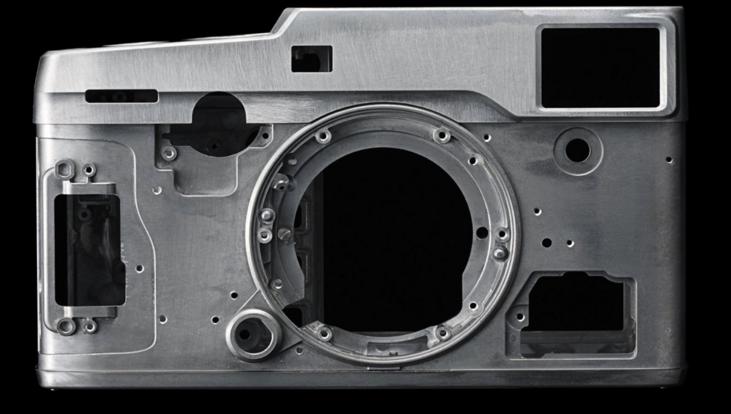
Autofocus
The X Pro 2 includes a ridiculous, fat, huge, monstrous number of autofocus points–273. Yup. 273. And they cover just about every nook and cranny of the screen. I love that they aren't all concentrated in the middle. 77 of the focus points are phase detection autofocus points. Phase detection means that the autofocus point can tell the lens if it needs to push out, or in to get proper focus, instead of requiring the lens to hunt back and forth until focus is found. The number of autofocus points is staggering, and welcomed.
Selecting an autofocus point can sometimes take too long if you have too many points to choose from. Fortunately, the camera allows for the points to be grouped so you can quickly move to a region of autofocus points and then zoom into that region to pick a specific point.
Fuji XT1 users and users of many other Fuji cameras, are familiar with the requirement to press the down button on the four-way selector, and then you can move around your autofocus point. The X Pro 2 makes this a much quicker process by including a joystick on the back of the camera so that the focus point can be moved around much more quickly. This is the first time I've seen an autofocus joystick on a mirrorless camera.
The speed of the autofocus remains to be seen, and that's a subjective measurement. The XT1 was never faster than a DSLR, but after the version 4 firmware update, I wouldn't call it “slow” either. I even had reasonable success photographing a college football game with it. I'd love to see an improvement in the autofocus speed, which it's rumored to have improved dramatically, but I can't comment on this until the camera is in my hands since this IS a subjective measurement.
You can measure the autofocus speed scientifically, but the real speed depends dramatically on the situation, the autofocus target, the specific lens used, etc.
Weight (And the REAL weight of the system)
The weight of the camera is a huge draw for me. Weight was the thing that pushed me away from my D810 in the first place. Given that I travel to shoot with readers of Improve Photography around the world about 10 times a year, I need a camera system that won't break my back after backpacking through the mountains, traveling throughout rural China, chasing the light in Iceland, and hiking through the forests in Costa Rica. The full frame DSLR systems (INCLUDING the A7RII which is actually NOT lighter than full frame DSLRs), were too heavy.
I'm slightly sad to see that the Fuji X Pro 2 gained just a little weight, but it's not significant (only 40 grams heavier than the previous version). To put that in perspective, the new version is only the weight of one of those tiny boxes of Sunmaid raisins.
The real weight numbers to pay attention to when buying into a camera system are not just the weight of the camera, but the weight of comparable lenses. This is what convinced me not to buy a Sony A7RII. The A7RII itself is lightweight, but Sony doesn't yet make a trinity of f/2.8 lenses. If you compare the weight of the Sony f/4 lenses against the Nikon or Canon f/4 lenses, you see that you really don't lose any weight by switching to Sony's full frame mirrorless system.
The below little comparison of my D810 and my Fuji XT1 when I switched was one of the biggest reasons for switching. Fuji is WAY less money and WAY lighter. But the weight argument will appeal to some photographers (especially those who travel, hike, or shoot day-long weddings), but not as much to other photographers who don't have to haul around their gear.
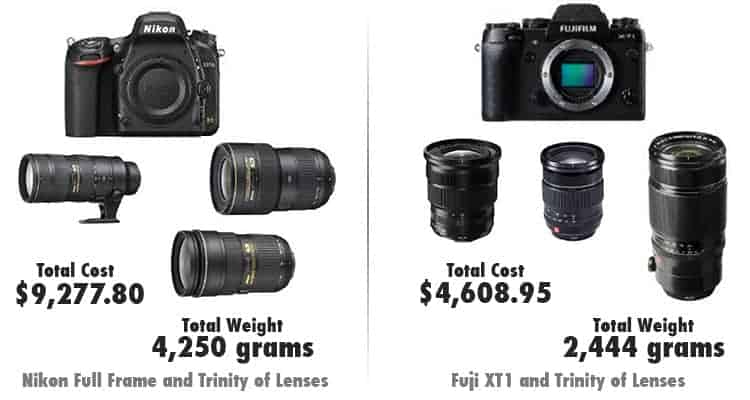
Video
The Fuji X PRO 2 does not include a 4k recording capabilities, which is a little bit of a let down for a camera in this price range, but frankly isn't too surprising given the fact that Fuji has never really gone crazy with video features.
The X Pro 2 does include a microphone port, but it is a 2.5mm port and not a more standard 3.5mm port, so you'll need to get an adapter for most of your mics. The good news is that it only costs a couple bucks.
The Lens System (And my favorite Fuji lenses)
The Fuji lens system is excellent, in my opinion. Coming from the famous Nikkor glass, I was not let down one tiny bit by the lens system available in the Fuji line.
If I were buying a Fuji today, these would be my personal picks for the lenses to get.
Fuji 10-24mm for your wide angle landscape shooting. Since I'm primarily a landscape photographer, this is my most-used lens.
Fuji 16-55mm lens for tighter landscapes or environmental portraits. This is similar to the focal range of a 24-70 in DSLR world.
Fuji 50-140 for tighter portraiture. This is the equivalent of a 70-200, and this lens does NOT disappoint!
Fuji 100-400mm. This is the brand new wildlife and sports lens for the Fuji system. It's been announced but isn't shipping yet.
With this lineup of lenses, there really isn't a photography situation that you couldn't shoot.
Because Fuji has not made a camera with more than 16 megapixels until now, I'm curious to test the Fuji lens lineup with higher resolution cameras, which are more likely to show any faults in the glass. So far, though, I've been totally satisfied with the Fuji lens lineup.
Sensor Size (And why I PREFER APS-C)
Personally, I love the APS-C sensor size. I missed it almost immediately when I “upgraded” to my first full frame camera years ago. While full frame has some benefits of low light performance, the difference is a lot less in real life than you'd expect.
I like the APS-C cameras because I get a longer focal range on my long lenses for when I'm shooting sports and wildlife, but on the wide end, I can get the exact same wideness as with a full frame camera because the wide angle lenses for APS-C cameras go to lower focal lengths (the 10-24 is a popular wide angle for the Fuji, but there is no rectilinear 10mm lens for full frame cameras. You'll usually shoot a 16-35, in which case the field of view is the same).
I also like APS-C cameras because the lenses are smaller as well, which makes the whole system significantly lighter. That's a big factor for me since I do so much traveling to shoot around the world.
DxO Mark doesn't test the Fuji cameras because their unique sensor technology does not work with their testing setup. So all the tests you'll see of the Fuji sensors will be more real life. That's fine with me. I've never found the tests from DxO Mark to line up with what I'm experiencing in real world scenarios.
What to Expect if You're Switching to Fuji or Ordering the X Pro 2
The first thing I noticed when I switched to Fuji is how much better colors look coming straight out of the camera, and in my raw files. The files look much more like Canon raw files than Nikon raw files. I was used to the dull look of Nikon colors until I switched to Fuji and remembered how nice it is to get the colors looking more natural right out of the camera without doing any work.
Low light performance is likely quite a bit better than you're expecting. This was the thing that I was really nervous about before switching, but as soon as I did my own real-world low light testing, I was pleasantly surprised with my Fuji XT1, and the X Pro 2 promises to be even better. I have no problems shooting the milky way or other night photography situations.
Extremely configurable. There are six function buttons on the camera, which is awesome, in addition to the quick menu which is also fully configurable, and on top of that, there is yet another configurable menu called “my menu” where you can add up to 16 of your most-used functions. Handy!
Update on January 27, 2016: Usually when you buy a new camera, it takes about 6 weeks for Adobe to update the software with the necessary RAW support for the new camera. This is extremely annoying for new camera users who sometimes have to shoot in JPG or convert to DNG until Adobe updates the software. The good news as of today is that Lightroom as already announced the support for the X Pro 2, so you'll be able to open your files in Lightroom as soon as you get the camera. (Thanks to Tim Evans and Ernst Haas who alerted me to this in the comments today).
Pre-Ordering the Fuji X Pro 2
I always pre-order my cameras through Amazon. You can Pre-Order the X Pro 2 here. For me they have been reliable in getting me the camera fast because they have ridiculously awesome shipping. If you click that link right now and then if you decide to actually place your order later, I'll get a 4% commission which helps to pay the direct costs of producing these in-depth reviews, and it doesn't cost you anything extra.
You can also pre-order through B&H right here (Affiliate link). The price is the same through both retailers.
Another option is to pre-order through your local camera store. It's happened more than a few times that I've seen cameras that were back ordered for MONTHS on Amazon and B&H which a local camera store would have in stock immediately. I haven't seen any backordering for the X Pro 2 where the estimated shipping date is anything other than the February release date, so I'm not sure this will be necessary for the X Pro 2. But it's a good tip to know when you're pre-ordering the 5D Mark IV later this year.
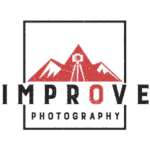
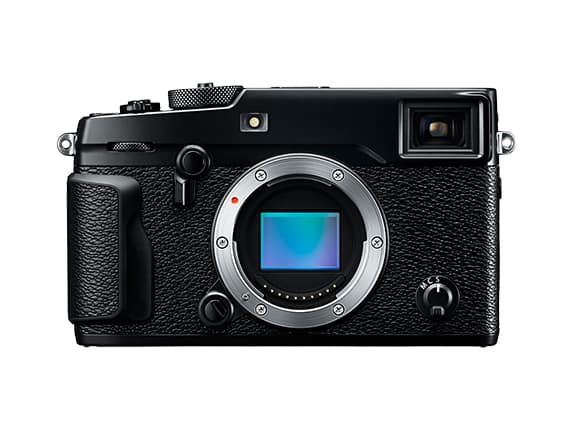
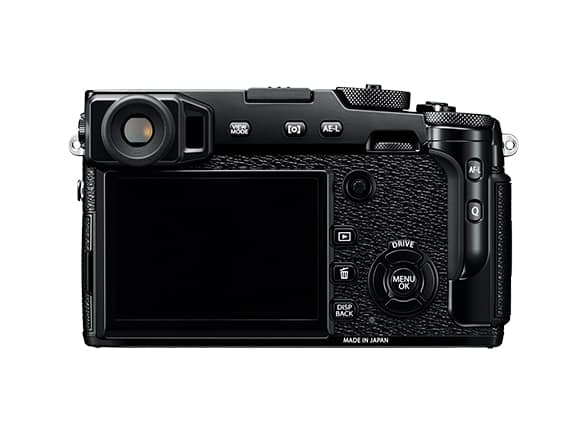

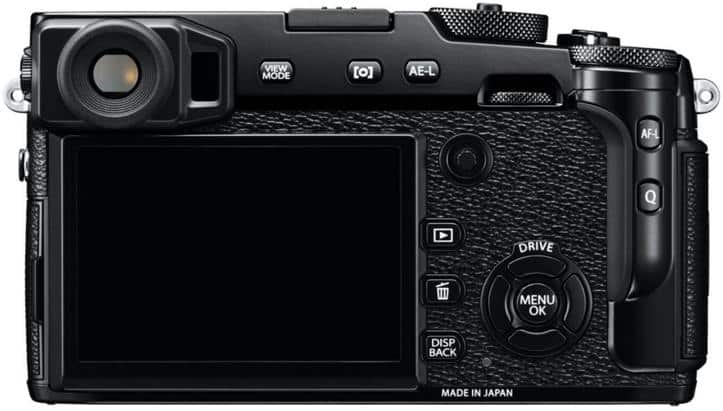
Thanks for such a great content. you have such a really nice information here.
Great article! This really hit home for me Thank you so much.
Thanks for sharing this kind of article.
Thanks for such a great content.
you have such a really nice information here.
wonderful details …..loved it…